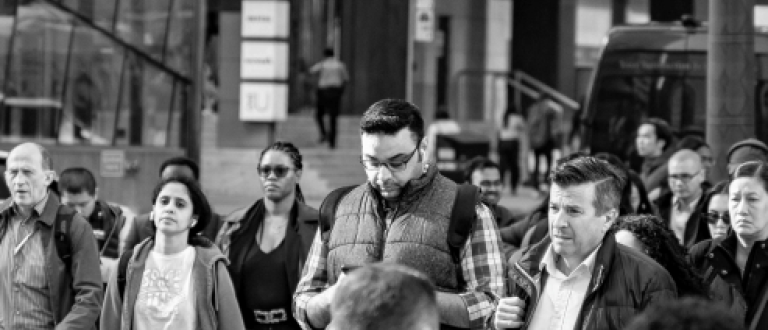The COVID-19 crisis has hit the charitable and nonprofit sector quickly, to devastating results.
Our team has heard from organizations across the country about what they’re experiencing. Many of these stories reveal unprecedented struggle, but we’re also hearing hopeful stories of organizations who have found ways to adapt and pursue their missions in the face of great adversity. We are sharing some of these adaptive strategies in the hopes that they’ll be useful to other organizations facing similar challenges.
*Hey - before you read this post, show your support for the sector by taking 60 seconds to send a letter to Justin Trudeau asking for a grant stabilization fund which would provide a vital lifeline to ensure charities and nonprofits will be here to support communities through this pandemic and into recovery.
Click here to send*
1. Collaborating in a spirit of mutual aid
In the face of huge obstacles, the sector has banded together. In Montreal, Fondation Espace Pour la Vie’s short term priority is to support its botanical gardens which are closed due to physical distancing measures but are doubling their vegetable production in order to donate to local food banks.
2. Finding new ways to reach people
Physical distancing measures have thrown a wrench into the operations of organizations that distribute physical goods. The staff at the Children’s Book Bank in Toronto believe that reading physical books, not just on screen, is essential for children, especially during challenging times like these. They have partnered with a local food security organization, which is considered an essential service, to distribute books to families.
3. Taking events online
Buy Social Canada, which promotes social procurement, had scheduled an in-person symposium for April. When physical distancing measures made the event impossible in its previous form, the team pivoted quickly to host the event online and shifted the content to emphasize how social procurement can be a tool for post-COVID-19 recovery and rebuilding.
4. Showing empathy for staff
To acknowledge the major stress that their staff is facing right now, The Centre for Community Organizations in Montreal is paying their staff for full time hours but not expecting them to work normal full time hours. They’re calling these “COVID hours” to account for extra care responsibilities that their staff have during this time.
5. Finding new ways to deliver programming
Wellspring Calgary, which has a mission to ensure no one has to face cancer alone, closed its physical locations in order to protect its high-risk community members. However, Wellspring continues to find ways to support those living with cancer by transitioning many of its free programs to an online platform, and offering its one-one-one Money Matters and peer support programs via phone. Attendance at Wellspring is up, as those who are isolating due to COVID report that they are ‘not alone’ and grateful to be connecting in Zoom rooms with their online Wellspring cancer support community.
6. Being flexible with grantees
Early on in the COVID-19 crisis, the Lawson Foundation stepped up to support its grantees by reassuring them that payments would continue, giving them flexibility to spend grant dollars on urgent costs, telling them not to worry about reporting right now, and encouraging them to reach out if they need to.
7. Creating a crisis management team
The COVID-19 crisis has been characterized by quickly changing circumstances and a great deal of uncertainty. ALS Quebec has addressed this by setting up a crisis management team, which speaks daily to monitor cash flow and keep on top of changes to operations.
8. Advocating on behalf of the sector
When the COVID-19 crisis began to unfold in Canada, many organizations and individuals mobilized to advocate for relief measures for both the sector and the communities they serve. Since mid-March, individuals have sent letters from Imagine Canada’s letter campaigns more than 2,700 times.
9. Listening
The situation we’re facing is unprecedented, and that comes with a lot of uncertainty about how an organization can best serve its community. Organizations such as CNIB have reacted by asking their communities what they need during this time, and letting that input guide priorities. In the case of CNIB, that has meant developing 150 programs to keep people with sight loss connected during COVID-19 in order to combat social isolation.
The unfortunate reality is that the sector will continue to feel the effects of COVID-19 for an extended period of time, and some organizations won’t be able to recover due to the financial precarity that is so common in an under-resourced sector. However, we hope that these adaptive strategies will be useful to some in weathering this storm. If you want to share how your organization is adapting to COVID-19, please connect with us.
If you want to learn more about how COVID-19 is impacting the sector, check out our new research report.


